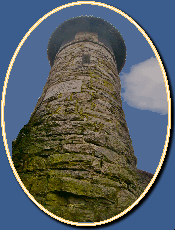Charles Edward Wheeler was born in Westport in 1872, never married and lived 50 years with a family in Stratford. He spent 34 years across the river in Milford as general manager of Connecticut Oyster Farms Co., which, with seven boats, cultivated and harvested area oyster beds.
As general manager he saw the fleet off at 5 a.m., then took care of paperwork in his office. If there was time he’d go to his workshop next door to carve and paint decoy ducks for which he became famous. He'd greet the boats and go over the tally between 4 and 6 p.m.
All of his friends called him Shang.
The nickname was pinned on him at age 13 and lasted more than 60 years. Around the time he enrolled in Weston Military Institute in the 1880’s, one of the tallest breeds of chickens was known as Langshang. Showman P.T. Barnum, of Bridgeport had one sideshow giant in his entourage named Chang. Wheeler was thin and six feet tall. His classmates at WMI would call him Chang or Langshang. The nickname was later reduced to simply "Shang" Wheeler.
He filled out at 6 feet, 2 inches weighing between 190 and 220 pounds. He became very strong but with a gentle manner. He dropped out of Staples High School, left home and went to sea working on a fishing boat for the next several years out of Boston, eventually deciding he didn’t like it. He still wanted a job that kept him near water and where he could work with his hands. He found this in the 1890’s in the cultivating and harvesting of oysters in Milford which was the next town over from Stratford where he lived with a family.
Milford, with its good harbor, was part of a rich oyster growing area extending from Stamford to Guilford. The combination of tides, water temperature, salinity and food supplies produced an unusually succulent oyster prized by gourmets.
There was another aspect of Milford that also pleased Wheeler, the 800-acre salt marsh by Milford Point at the mouth of the Housatonic River. It was simply called Knell’s Island at the time due to the one true island in the midst of silted up channels of the marsh. It was a fine nesting area for ducks and other birds. That brought in duck hunters. For years Wheeler was a market gunner out of Knell’s Island, shooting ducks for stores and restaurants. And What did duck hunters need? Wooden decoys which they usually carved by themselves, Wheeler became an exceptionally good decoy carver.
As Stratford attorney Raymond Baldwin, a fishing buddy of Wheeler’s who became governor and state supreme court justice, said: “ when they (Wheeler’s decoys) are placed it the water, they…look as real and natural in size, shape, color and posture, as if alive.”
Friends encouraged Wheeler to enter his work in decoy contests which he did and never lost one. A “Look” Magazine article in 1955, six years after he died, described a Wheeler work “as possibly the best decoy ever.” The article went on: “Walter Chrysler, the auto maker, once offered Shang $15,000 (more than $130,000 in today’s deflated currency) for 30 pairs of Connecticut waterfowl on display at a New York museum. Shang refused, because he carved for pleasure, never for money. Generally, if a friend admired one of his works, Shang gave it to him.”
Oystering was seasonal. In warm weather he was involved in that while in the cold weather he pursued other interests. During his lifetime, he was known as a superior football player, amateur boxer, a nationally known breeder of Llewellyn setters, a champion fly caster who also created many new flies, and a political cartoonist. He was among the nation’s leading experts on oysters and their cultivation, long before most Americans had heard of aquaculture and the possibilities of farming the oceans.
State rivers became excessively polluted around World War I, so he became active in politics as a way to help the oyster industry through clean rivers. Much politics were discussed with friends when they visited him in his Milford office while he continued to carve decoy ducks. In 1921 he was named to a state committee to study stream pollution. In 1923 he won his first election as a state representative. He served two terms as state rep and one as state senator before a law was passed in 1927 to create a state commission regulating water quality in streams. He later served as an advisor to the state fish and game commission.
National recognition of Milford’s shell fisheries came in 1918 when the U.S. Bureau of Fisheries established an experimental lab at Milford Harbor to observe conditions of oyster and clam cultures. In 1935 Wheeler was instrumental in raising the $60,000 to build a larger marine lab and dock on Rogers Avenue. The laboratory used the research vessel, R/V Shang Wheeler, a 50-foot copper clad wood hulled boat, from 1951 to 2001 when it was retired from service.
In 1969, all the oyster buildings at the mouth of the harbor gave way to condominiums and boat slips retaining the name of Oyster Landing. The oyster industry is remembered today with the Milford Oyster Festival each August. Wheeler is honored today by the renaming of the Knell’s Island and surrounding salt marsh as the Charles E. Wheeler Wildlife Area. He is, thus far, the only Milford Hall of Fame member who did not actually reside in Milford, approved by special motion of the committee due to the extensive contributions, work and leisure time spent in our City.



